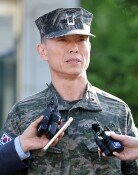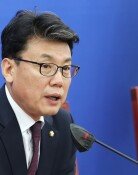Gov’t to open respiratory clinics to prepare for second wave of COVID-19
Gov’t to open respiratory clinics to prepare for second wave of COVID-19
Posted May. 05, 2020 07:44,
Updated May. 05, 2020 07:44
The South Korean government has decided to open some 1,000 respiratory clinics across the country in an effort to prevent a second wave of COVID-19. The new practices will help prevent coronavirus infections in hospitals and provide uninterrupted medical services for respiratory patients.
On Monday, the government, the Korea Medical Association and the Korean Hospital Association have agreed to build a medical system to prepare for a possible rise in the number of respiratory patients in the fall. The main idea is to designate clinics to care solely for patients with respiratory symptoms or a fever to reduce contact with other patients. However, those suffering from chronic respiratory diseases such as asthma will be advised to visit the same hospital they always have.
There will be two types of respiratory clinics. One is the open clinic that will be located at public facilities such as community health centers where local doctors can treat patients. The city of Hanam in Gyeonggi Province has been operating an open clinic at its city library. The other 500 will be operated by private clinics and medical centers that submit an application to the government.
The government has raised rewards to hospitals that provide suspected COVID-19 patients with tele-treatment. Starting this month, primary care centers offering tele-treatment will receive 30 percent of the treatment cost, which will be funded by the national insurance.
Meanwhile, the government has extended the prepayment for national insurance reimbursements by one month to June. It allows nursing centers to receive 90 to 100 percent of last year’s monthly average reimbursements in advance and settle the difference later on. The prepayment system aims at helping nursing centers focus on treating patients setting aside concerns over management. As of now, 4,621 nursing centers have received 736.1 billion won, and one trillion won will be required each in May and June.
Sung-Min Park min@donga.com
Headline News
- Yoon: 14 bn barrels of oil and gas could be buried in Yeongil Bay
- Korean Air chairman: U.S. expected to approve merger with Asiana by October
- Korean War veteran receives Hwarang Medal in 73 years
- Iceland elects businesswoman Halla Tomasdottir as president
- Pyongyang’s trash provocation makes Seoul consider loudspeaker broadcasting







